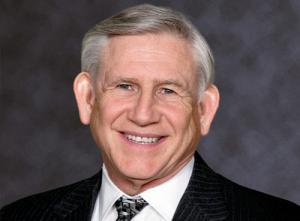Coronavirus & No Disconnect Policies, by Charles Bayless

The former CEO of two utilities during his distinguished career proposes a solution to a looming problem we face:
In response to the coronavirus crisis, regulatory commissions in many jurisdictions have instituted orders forbidding utilities from disconnecting customers who do not pay their utility bills during the pandemic. While a necessary response, the question arises, what do we do with the deferred amounts once the crisis is over?
The present situation is not like the past where commissions enacted winter or summer no shut off periods. Those seasonal periods were for a few months. In the case of the coronavirus crises, the period of non-payment could last for very many months, resulting in much larger deferred amounts.
Additionally, winter or summer no shut periods were utilized by only a few utility customers. But orders to address the present crisis may be used by very many more customers.
Some utilities may experience revenue shortfalls — relative to billed amounts — of ten to twenty percent or more. A few utilities might eventually near the end of their financial resources.
These orders create another problem. What to do when the orders are lifted, and some customers are faced with the accumulation of bills they couldn’t and didn’t pay?
We can’t immediately disconnect customers when the orders are lifted. Customers will vary in their ability to pay at that time. Some will prudently conserve cash due to the uncertainty in their economic circumstances.
Utilities and regulators should begin to consider the problems that may ultimately arise from these orders, and structure solutions to this coming problem.
Here is one suggestion. Set up a regulatory asset for the deferrals. Commissions could thereby send a signal to the financial markets that some portion of the missed payments will be recovered. This signal will allow utilities to finance these costs and maintain their other necessary operations.
The regulatory asset will be rolled into rate base and collected over some period, say five years. This would give the financial community assurance that the asset will be collected and lower utility borrowing costs. It would also provide customers — and the economy — with assurances that just as the economy is starting to recover, that customers will not be hit with the shock of suddenly having to pay months of utility bills all at once.
When the crisis is over, the customer simply returns to their normal electric bill with a deferral surcharge. Instead of having to pay a large bill immediately.
We would still have to decide what can be deferred. What part if any should the utility shareholders have to bear? What is the recovery period? Is all the cost to be recovered from non-payment customers, or is some of it to be socialized to all customers?
Of course, not everyone will agree on solutions. Some parties may point out that no industry should escape unscathed in such crises, and that no regulatory asset should be set up. Or if one is set up, it should be only for out-of-pocket direct cash expenses, and the rest should be written off. Utilities might point out that under numerous court cases they have a right to earn a reasonable return and should ultimately be able to recover the entire deferred cost.
Regulators, consumer advocates and utilities should start planning now. The coronavirus has created a crisis. Let’s make sure we don’t create another one by not addressing what happens when it is time to lift the no disconnect orders.



